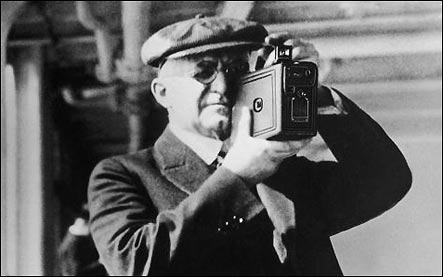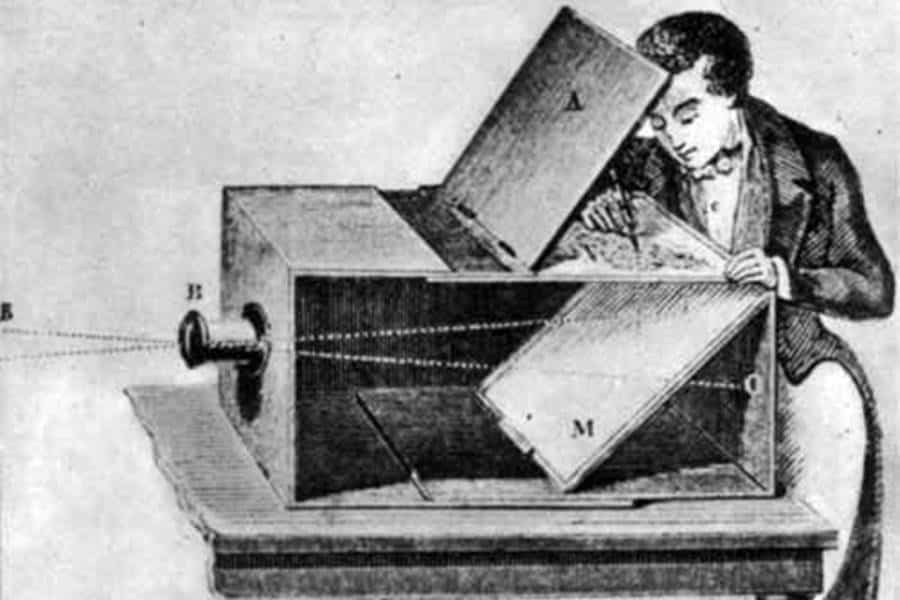The Invention Of Photography
The Invention Of Photography - Let's take a trip down memory lane and discover the fascinating history of photography! From its humble beginnings to its rapid evolution, we'll explore everything you need to know about this revolutionary technology. So sit back, relax, and get ready for a journey through time.
The Genius of George Eastman
The Birth of Photography
 When we think about the birth of photography, we often think about George Eastman. As the founder of Kodak and the inventor of roll film, Eastman revolutionized the way we capture images forever. He made photography more accessible by inventing the first handheld camera that could be used by anyone, and eliminated the need for bulky equipment and darkroom processing. Today, Eastman's legacy lives on as one of the most influential figures in photographic history.
When we think about the birth of photography, we often think about George Eastman. As the founder of Kodak and the inventor of roll film, Eastman revolutionized the way we capture images forever. He made photography more accessible by inventing the first handheld camera that could be used by anyone, and eliminated the need for bulky equipment and darkroom processing. Today, Eastman's legacy lives on as one of the most influential figures in photographic history.
The Legacy of Louis Daguerre
The Father of Daguerreotype Photography
/123396306-F-56b005573df78cf772cb1ee1.jpg) While Eastman transformed the way we take photographs, Louis Daguerre is credited as the father of daguerreotype photography. Daguerre took the science of optics and combined it with the principles of physics to create a photographic process that produced highly detailed, one-of-a-kind images. Using a copper plate coated with silver iodide and exposed to mercury vapor, Daguerre created images that were highly sought after by the public. Today, daguerreotypes are highly prized by collectors and historians alike as a window into the past.
While Eastman transformed the way we take photographs, Louis Daguerre is credited as the father of daguerreotype photography. Daguerre took the science of optics and combined it with the principles of physics to create a photographic process that produced highly detailed, one-of-a-kind images. Using a copper plate coated with silver iodide and exposed to mercury vapor, Daguerre created images that were highly sought after by the public. Today, daguerreotypes are highly prized by collectors and historians alike as a window into the past.
The Evolution of Photography
A Brief History of Photography and the Camera
:max_bytes(150000):strip_icc()/brief-history-of-photography-2688527-FINAL-5bef134d46e0fb0026cda5f9.png) As technology advanced, so did photography. By the mid-1800s, the first portable cameras had been invented, and photographers were able to take their equipment out into the field. As the 20th century dawned, new photographic techniques emerged, such as color photography and motion pictures. By the end of the century, the rise of the digital age had transformed photography yet again, making it easier and more affordable than ever before to capture and share images.
As technology advanced, so did photography. By the mid-1800s, the first portable cameras had been invented, and photographers were able to take their equipment out into the field. As the 20th century dawned, new photographic techniques emerged, such as color photography and motion pictures. By the end of the century, the rise of the digital age had transformed photography yet again, making it easier and more affordable than ever before to capture and share images.
The Birth of Photography: Nicéphore Niépce and August Otto
Two Minds That Came Together to Change the World
 The invention of photography is often credited to a Frenchman named Nicéphore Niépce, who in 1826 created the first permanent photograph known as "View from the Window at Le Gras". However, it's worth noting that Niépce worked in collaboration with August Otto, which suggests that the true history of photography is a little more complicated than we might realize. Regardless of who gets the credit, Niépce and Otto's invention marked a significant turning point in the history of human civilization.
The invention of photography is often credited to a Frenchman named Nicéphore Niépce, who in 1826 created the first permanent photograph known as "View from the Window at Le Gras". However, it's worth noting that Niépce worked in collaboration with August Otto, which suggests that the true history of photography is a little more complicated than we might realize. Regardless of who gets the credit, Niépce and Otto's invention marked a significant turning point in the history of human civilization.
The Key Facts, Figures, and Important Events in the History of Photography
The Invention of Photography: What You Need to Know
 Photography has come a long way since its inception, and yet the basic principles behind it remain the same. From the original invention of photography to the first motion pictures and beyond, the history of photography is a story of human innovation and ingenuity. Whether you're a professional photographer or just someone who loves to take pictures, it's important to understand the history and evolution of this incredible technology. So next time you pick up your camera, remember that you're standing on the shoulders of giants who have come before you.
Photography has come a long way since its inception, and yet the basic principles behind it remain the same. From the original invention of photography to the first motion pictures and beyond, the history of photography is a story of human innovation and ingenuity. Whether you're a professional photographer or just someone who loves to take pictures, it's important to understand the history and evolution of this incredible technology. So next time you pick up your camera, remember that you're standing on the shoulders of giants who have come before you.
Photography Tips, Ideas, and How-To
Capture the Perfect Shot Every Time
Now that you know a little bit more about the history of photography, it's time to put that knowledge into practice. Here are some tips, ideas, and how-to guides to help you capture the perfect shot every time:
1. Know Your Camera
Before you can start taking great photos, you need to know how to use your camera. Read the manual, play around with the settings, and experiment with different modes to get a feel for what works best.
2. Find the Perfect Lighting
Lighting is one of the most important factors in photography. Whether you're shooting outdoors or indoors, make sure you choose the right lighting conditions to create the mood and tone you're looking for.
3. Use Composition to your Advantage
Composition is the arrangement of elements within your frame. Pay attention to the lines and shapes in your shot, and use them to create visually compelling images.
4. Get Close to Your Subject
If you want to capture the details of your subject, consider getting in close. This technique can be particularly effective for portrait and macro photography.
5. Edit Your Photos
Post-processing is a critical part of the photographic process. Whether you're using photo editing software or just adjusting the settings on your camera, make sure you take the time to edit your photos to perfection.
Remember, the most important thing is to have fun and experiment. Photography is a creative pursuit, so don't be afraid to try new things and take risks. Who knows? You might just capture a moment that will be cherished for generations to come.
Find more articles about The Invention Of Photography
Post a Comment for "The Invention Of Photography"